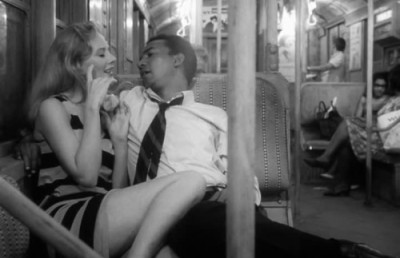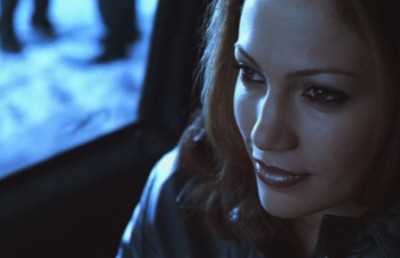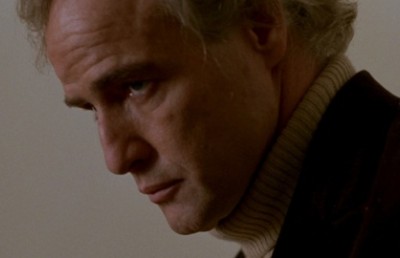When the Final Girl is Not a Girl: Reconsidering the Gender Binary in the Slasher Film
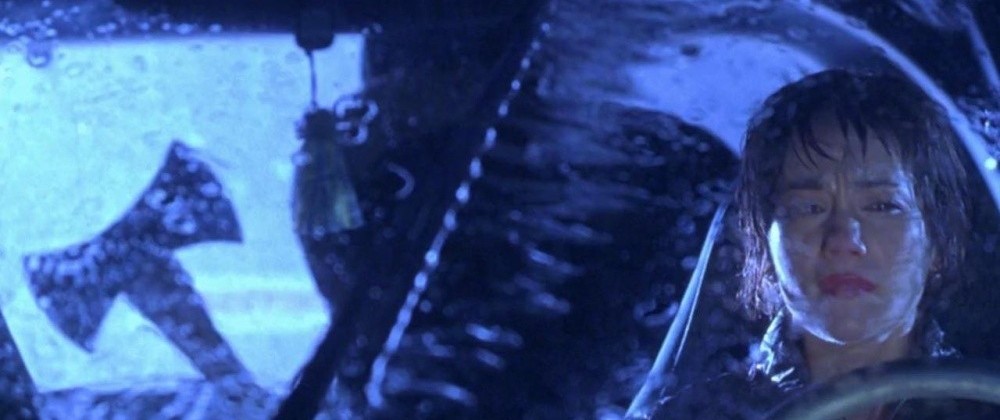
Abstract:
This study expands the applicability of Carol Clover’s notion of the “Final Girl” as a trope in the slasher film genre. It argues that Clover’s concept is valuable, but limited by its focus on a binary gendered relationship between the abject, emasculated male monster and the masculinized Final Girl. By looking at certain works that function according to the slasher film’s structure, but do not conform to this gendered binary, it re-contextualizes the “Final Girl” as a concept rather than a particular character with identifiably gendered characteristics, To this end, I propose the construction of a “Final Subject,” whose antithesis (the emasculated male monster) is destined to remain within the pre-symbolic abject. This analysis is carried out by examining the film Urban Legend, which includes a female monster, and Nightmare on Elm Street Part 2 and Friday the 13th: The Final Chapter, both of which feature male characters that function according to the Cloverian archetype of the Final Girl.
Although Carol Clover’s conceptualization of a “Final Girl” —a female character able to overcome all odds and defeat a seemingly indestructible male monster— appears at first glance to be a ubiquitous feature of the “slasher” film, 1 many works that seem to be easily classified as such depart from such a clear and gendered binary. This includes films made both before and after Clover’s postulation of this trope. 2 The purpose of the present study is to expand Clover’s notion of the Final Girl by looking at certain slasher films that challenge the binary of an opposition between an emasculated male monster, and a phallicized, masculinized Final Girl, but that still correspond to Clover’s structural and relational framework.
My contention is that if we view the “Final Girl” as a conceptual figure rather than a particular character with identifiably gendered qualities, both the applicability of Clover’s claims and the value of this theory to slasher discourse are greatly expanded. To this end, I propose the construction of a “Final Subject,” whose antithesis (the emasculated – though not necessarily male – monster) is destined to remain within the pre-symbolic abject. 3 This will be accomplished in a two-fold manner; first through an examination of Urban Legend (Jamie Blanks, 1998), a film whose formula and structure are classically “slasher,” but whose monster is revealed to be a female rather than a sexually disempowered male. Second, a pair of slasher films that do not possess a Final Girl will be examined in order to demonstrate that Clover’s methodology can still be utilized in these cases by decentralizing her focus on gender relations, in lieu of a relationship between the pre-symbolic abject and the symbolic. In this case, the films to be analyzed are A Nightmare on Elm St. Part 2: Freddy’s Revenge (Jack Sholder, 1985) and Friday the 13th: The Final Chapter (Joseph Zito, 1984). 4
In the essay “Her Body, Himself: Gender and the Slasher Film” (originally published in 1987), which she would eventually expand into the larger study Men, Women and Chainsaws: Gender in Modern Horror Film (1993), Carol Clover clearly establishes many, quite specific criteria that the figure of the “Final Girl” possesses in the slasher genre. According to Clover, “[the Final Girl] is introduced at the beginning [of the film] and is the only character to be developed in any psychological detail…She is intelligent, watchful, level-headed; the first character to sense something amiss and the only one to deduce from the accumulating evidence the patterns and extent of the threat.” 5 More importantly for this study, Clover stresses that the Final Girl is almost immediately masculinized: “The gender of the Final Girl is…compromised from the outset by her masculine interests, her inevitable sexual reluctance (penetration, it seems, constructs the female), her apartness from other girls.” 6 And of course it is the Final Girl who remains alive until the end of the film, when she is able to destroy the seemingly indestructible, yet emasculated male monster through the use of a weapon with which she has armed (or phallicized) herself.
But what of films that seem to clearly be “slashers” in which either the figure of the “Final Girl” is not a girl, or secondarily, the monster is not a male (even an emasculated one)? My contention is that the figure that Clover calls the “Final Girl” invites interpretation as an a-gendered conceptual construction that, through a (victorious) confrontation with an abject monster, moves itself from the abject into the realm of the symbolic and establishes itself as a subject. This movement into the symbolic is a passage that the monster-killer fails to take, and as a result remains intimately bound within the pre-symbolic abject; temporarily repressed, but always ready to re-emerge (either by refusing to die within a specific film, or re-emerging in sequel after sequel).
Regarding the climactic victory of the Final Girl over her would-be killer, Clover explains,
When the Final Girl stands at last in the light of day with the knife in her hand, she has delivered herself into the adult world…The killers…are explicitly figured as sons in the psychosexual grip of their mothers…The difference is between past and present and between failure and success. The Final Girl enacts in the present, and successfully, the parenticidal struggle that the killer himself enacted unsuccessfully in his own past. 7
More directly in terms of the gender distinctions between the monster and the Final Girl, Clover writes,
(T)he achievement of full adulthood requires the assumption and, apparently brutal deployment of the phallus. The helpless child is gendered feminine; the autonomous adult or subject is gendered masculine…It is the killer’s tragedy that his incipient femininity is not reversed but completed (castration) and the Final Girl’s victory that her incipient masculinity is not thwarted but realized (phallicization). 8
In these two quotes, we can recognize Clover’s reliance on a binary gender structure. However, the groundwork for our purposes of constructing an alternate (admittedly still structuralist) model is also laid out quite explicitly. The questions that we must inevitably pose are: 1) must the “emasculated” monster that is doomed to remain in the pre-symbolic abject be male?; and 2) must the figure that emerges as a phallicized subject/“adult” be a female? Or, can the criterion instead be that the figure that performs the ultimate castration on the monster initially functions in the realm of the pre-symbolic before becoming a subject through phallicization (i.e. wielding a weapon and destroying the monster)? As the primary purpose of this paper is to focus on the construction of a Final Subject in place of the Final Girl, I will first deal with the former question, relating to the gender of the monster.
On the surface, the film Urban Legend seems to conform to Clover’s conception of the slasher film, including a Final Girl that clearly embodies many of the features Clover claims that she should. A somber college student, Natalie (Alicia Witt) is immediately set apart from other female characters through her sexual disinterest. When she walks in on her roommate Tosh (Danielle Harris) having sex, she embarrassingly turns out the lights and puts on headphones so that she will not have to listen to the sexual sounds coming from across the room. Sasha (Tara Reid), a sexually liberated college radio host who gives explicit sexual advice on her show, offers another feminized contrast to Natalie’s sexual ambivalence. Further, Natalie is the first character to “deduce from the accumulating evidence the patterns.” 9 of the murders, which are imitating urban legends. Urban Legend’s positioning of Natalie as its Final Girl continues to the film’s conclusion, as she triumphs over the film’s monster. Just as Clover argues the Final Girl should in the slasher film’s final scene, Natalie “stops screaming, looks at the killer, and reaches for the [phallic weapon – in the case of Urban Legend, a car – as she] addresses the killer on [its] own terms.” 10
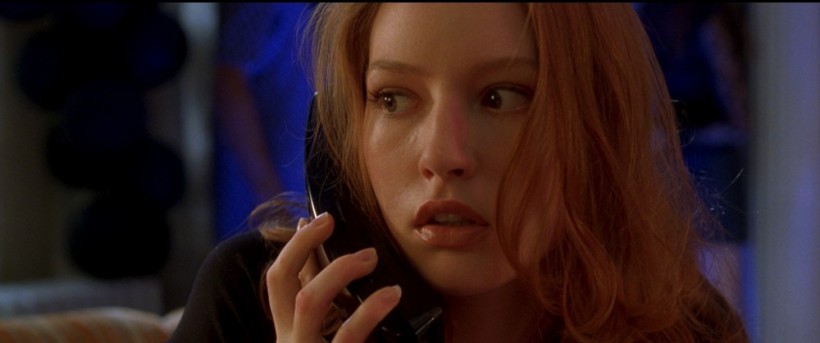
But despite its adherence to many slasher characteristics, during Urban Legend’s final confrontation scene, audience expectations and Clover’s notion of a feminized male killer are subverted as the monster is revealed to be Natalie’s female friend, Brenda Bates (Rebecca Gayheart), whose name is no doubt a tribute to the quintessential sexually deviant monster, Psycho’s Norman Bates. While this revelation may appear to undermine Clover’s conception of the slasher film’s emasculated male monster, formal and textual clues reveal two factors that actually make the film partially conform to the structure (though not specifics) of her theory. First, our experience of watching Urban Legend still conforms to the relationship set up by Clover right up until Brenda is revealed as the killer. Second, even after we are aware that the monster is female, if we view the relationship between the monster and Final Girl as one between the pre-symbolic and the symbolic, Urban Legend’s structuralist framework still adheres to the Cloverian relationship.
The concept of female monsters is not unique in slasher films, as the psychotic and vengeful Mrs. Voorhees (Betsy Palmer) of the original Friday the 13th _ (Sean S. Cunningham), or Amanda, Jigsaw’s protégé in the _Saw series, remind us of. Clover actually briefly acknowledges the problem of female monsters in this film: “woe to the viewer of Friday the Thirteenth I who identifies with the male killer only to discover, in the film’s final sequences, that he was not a man at all but a middle-aged woman.” 11 However, Urban Legend’s utilization of the female monster differs from Friday the 13th’’s in key ways that suggest this last-minute gender revelation does not undermine our experience of the film. In Friday the 13th, the killer is never showed onscreen until after “he” has been exposed as Mrs. Voorhees. Instead, the film opts for POV shots of the killer as she looks at her nubile, young victims. Thus, the audience is not disposed to view the monster as a male, or identify with “him” as such, but do so only resultant of prior experiences with slasher films where monsters are predominantly male. In Urban Legend, there are many moments where the film’s narrative and formal logic dictate that the monster is presented to us as a male immediately up to the moment where the murderer removes “his” hood, revealing that “he” is Brenda Bates. Many of the murders indicate that a brutally strong male is the culprit: Tosh is overpowered on her bed and choked to death by large, strong hands; after unsuccessfully attempting to seduce Natalie, Damon (Joshua Jackson) is strung up to hang from a tree; Sasha is picked up and thrown over a railing as though she is a rag doll.
Other formal elements also indicate that the film is presenting the monster as a male, even at the expense of logic. Immediately after Damon is killed, Natalie comes “face to face” with the killer. Natalie’s face is shot over the right shoulder of the killer, indicating that she is much smaller than her aggressor, while Brenda’s character is continually shown to be shorter than Natalie. In addition, a male actor (Matt Birman) actually plays the body of the killer until it is exposed to be Brenda. Further, the film’s narrative continually points suspicion towards the film’s male characters, including a stuttering gas station attendant (Brad Dourif), the mysterious Professor William Wexler (Robert Englund), and Natalie’s friend/romantic interest, Paul (Jared Leto). As the film continually disposes its viewers to identify the monster as a male through formal and narrative suggestions, the revelation of a female killer does not expose viewer identification with a male killer as problematic or assumptive in the same manner as in Friday the 13th.. Thus, even when the film is read retrospectively, just because the killer is a female does not alter the fact that the majority of the film can be read according to Clover’s methodology.
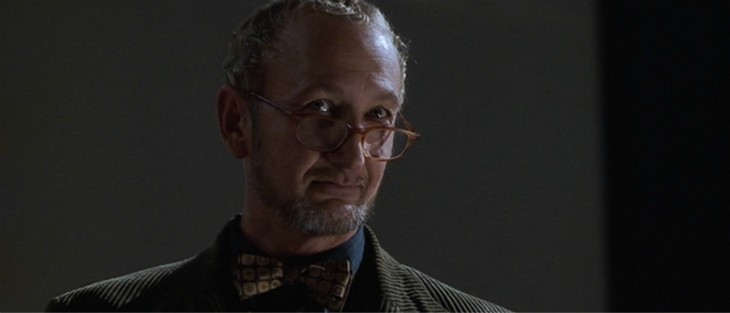
Even after Brenda is revealed to be Urban Legend’s killer, the narrative still permits her character to be read according to Clover’s conception of the feminized male monster, if we decentralize the focus on gender. In the duration of the film, it is revealed that Natalie played a part in a prank based on an urban legend that resulted in the death of a young man. While Brenda holds Natalie hostage, she reveals that the young man was a boyfriend whom she was going to marry, and the murders that she carried out were inspired by a desire for revenge. If Clover’s conception of the slasher monster as an emasculated male that can never assume the position of subject is altered only slightly, a strict adherence to Clover’s theory can actually be seen here. If the body of the monster does not have to be male, any body that is destined to remain within the abject can then be viewed as a Cloverian monster.
The work of feminist theorist Judith Butler helps illuminate this in her discussion of what sorts of “bodies” (are forced to) consist in these pre-symbolic, abject spaces in her 1993 book Bodies That Matter. Butler claims that the realm of the heterosexually imperative subject
requires the simultaneous production of a domain of abject beings, those who are not yet ‘subjects,’ but who form the constitutive outside to the domain of the subject. The abject designates here precisely those ‘unlivable’ and ‘uninhabitable’ zones of social life which are nevertheless densely populated by those who do not enjoy the status of the subject, but whose living under the sign of the ‘unlivable’ is required to circumscribe the domain of the subject. 12
If the slasher film monster is thus considered as a body forced to exist outside the domain of the heterosexually imperative subject, Brenda’s actions clearly align her with the castrated male monster of Clover’s theory. About to enter into the patriarchal union of marriage, Brenda’s journey into the realm of the heterosexually imperative subject was interrupted when her heterosexual partner was killed. As the marriage of Brenda and her boyfriend would see the symbolic joining of two people as one, his death becomes her metaphorical castration, marking the end of her journey towards subjectivity and dooming her to exist as a “castrated” being in the abject. Brenda’s desire for Paul, and her anger at Paul’s affection for Natalie, further suggests that Brenda’s inability to enter the domain of the heterosexual subject is the source for her monstrosity.
The bodies that must populate the uninhabitable abject that Butler refers to can also be seen as characterizing those individuals who play the role of the Cloverian “Final Girl” in Nightmare on Elm St. Part 2: Freddy’s Revenge (hereafter referred to as Freddy’s Revenge) and Friday the 13th: The Final Chapter (hereafter referred to as The Final Chapter), even though they are not female characters.
First, let us illuminate a clear connection that exists between those abject bodies discussed by Butler, and Robin Wood’s conception of the horror genre that emphasizes patriarchal capitalism’s repression of sexual energies that threaten the structure of the family unit . 13 As the very existence of the patriarchal structure depends on the repression of sexual energies that deviate from monogamous heterosexuality, those beings that embody said energies are relegated into Butler’s conception of the “constitutive outside” – that is, the realm of the pre-symbolic where the slasher monster is destined to remain until its final castration (destruction), and where the Final Girl (or what we can now refer to as the Final Subject) will emerge from into the symbolic.
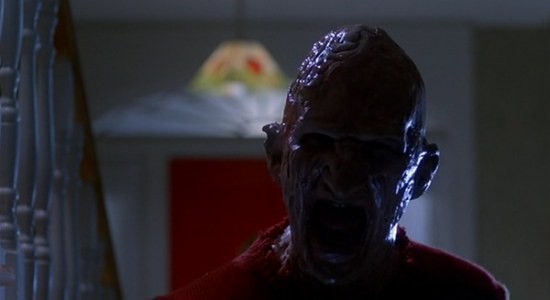
For our examination of non-female Final Subjects, two particular sexual energies that Wood argues are repressed by patriarchal capitalism are of interest. First is bisexuality, which “represents the most obvious and direct affront to the principle of monogamy and its supportive romantic myth of ‘the one right person’; the homosexual impulse in both men and women represents the most obvious threat to the ‘norm’ of sexuality as reproductive and restricted by the ‘ideal’ of family.” 14 The second repressed sexual energy, which will be examined in greater detail when The Final Chapter is examined, is the sexuality of children. 15
In Freddy’s Revenge, the Final Subject takes the form of Jesse (Mark Patton), an adolescent male who is immediately de-masculinized, suggesting that even though he is a white male on the verge of adulthood, he is still within the realm of the abject. Jesse is seen for the first time in the film’s opening sequence. He is riding a school bus, girls are laughing at him, and his hair and clothing make him look much younger than he is. The sequence is eventually revealed to be a dream controlled by the monster Freddy Krueger (Robert Englund), and it culminates with a very feminine scream from Jesse as he awakens from the nightmare. This scream not only serves to immediately undermine Jesse’s masculinity, but also binds him to the pre-symbolic as a metaphor for infantilized echolalia – that is “rhythm, intonation, [and] variable intensities” that are babbled by the pre-symbolic infant prior to its move into the realm of language (the symbolic). Jesse’s terrified scream suggests that he has still, metaphorically, not achieved the moment where “echolalia [becomes] a symbolic function [and where] the apprenticeship of language as a system of communicative signs is assured.” 16
Although the infantilization of Jesse inevitably binds him to the pre-symbolic (and this concept will be returned to briefly below), Jesse’s abject status outside the realm of the heterosexual imperative subject is most clearly manifest in the film’s blatant homoeroticism. In Monsters in Closet, a study of the relationship between homosexuality and the horror film, Harry Benshoff overtly illustrates the homoeroticism present in Freddy’s Revenge, referring to the film as “exceptionally queer” and claiming that “Jesse is played with a sweet gay boy aura by actor Mark Patton.” 17 Moreover, Benshoff suggests that Freddy Krueger is the “embodiment of Jesse’s internalized homophobia,” emerging at moments where Jesse may be tempted to act upon latent homosexual desires. 18 This claim is supported by two sequences in which Jesse finds himself in a homoerotic (potentially homosexual) situation, and Freddy emerges to kill the (supposed) object of Jesse’s homosexual desires. The first victim is Jesse’s sadomasochistic gym teacher, who is slaughtered by invisible claws after being strung up nude in the school showers. Only after he is dead do we see Jesse cowering in the shower brandishing Freddy’s trademark razor glove. The second such sequence is when Jesse goes to the bedroom of his friend Grady (Robert Rusler) in an attempt to protect himself from Freddy’s power. As was the case with Jesse’s gym teacher, Freddy emerges at this homoerotic moment and kills Grady before Jesse can act on any latent homosexual desires.
These two moments certainly suggest that Freddy is acting as Jesse’s homosexual repression. Moreover, in a particularly notable manner for a slasher film, no females are killed in Freddy’s Revenge. Even during a pool party massacre, only males fall victim to Freddy. But there are several other instances in the film where potential female victimizations challenge Benshoff’s reading, and which his analysis does not account for. One of these examples is when Freddy attempts to have Jesse kill his little sister, and another where Freddy attempts to emerge during a make-out session between Jesse and his friend/romantic interest, Lisa (Kim Myers). In both of these instances, it appears as though Jesse is able to resist Freddy’s inclination to kill. If this is the case, the question that must be posed to Benshoff’s interpretation is, if Freddy is the embodiment of Jesse’s internalized homophobia, why would he attempt to use Jesse to kill females?
Because Freddy only partially emerges when Jesse is about to kill a female, and fully emerges to kill males for whom Jesse may be feeling homosexual urges, Freddy can be more accurately thought of as an embodiment of Jesse’s sexual confusion, which finds an allegory in bisexuality – the critical sexual energies that Wood argues is repressed by patriarchal capitalism. 19 If this confusion is resultant of Jesse’s unstable sexual identity, it can be seen as indicative of his pre-symbolic status (as well as Freddy’s since he is the embodiment of this confusion) through his inability to articulate his sexual identity. Jesse’s status as pre-symbolic is further suggested by his inability to explain the bizarre occurrences that have been happening to him.
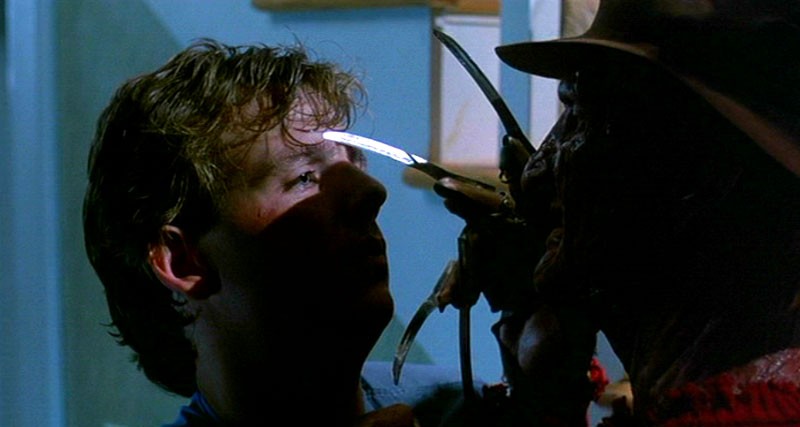
Freddy, as an embodiment of Jesse’s sexual confusion, emerges not only at moments of potentially homosexual acts, but when Jesse is confused by conflicting sexual inclinations. An indication early in the film that foreshadows Freddy’s role as an emergent force suggesting Jesse’s unclear sexual identity is the first dream sequence in which Freddy appears, after the opening school bus sequence. This dream occurs after Jesse has his first (rather homoerotic) encounters with Grady (who attempts to pull Jesse’s gym shorts down during a game of softball), and the sadistic gym teacher – both of whom are eventually killed by Freddy.
The film’s treatment of potential female victims is more challenging, but can still be read as Freddy (and his emergences) functioning allegorically as Jesses’s sexual confusion. In the case of his sister, it is possible that Jesse may have had sporadic and confusing moments of latent incestuous desire for his younger sister, which would be the catalyst for Freddy’s emergence and attempt to kill her. Yet in this case, Jesse is able to retain control over his own body when Freddy wants him to kill his sister because this form of taboo sexual confusion is less confusing and threatening for the adolescent than his confusion regarding his potential sexual desire for males.
As the film suggests that Jesse has some degree of romantic interest in Lisa, Freddy’s attempted emergence during their make-out session is slightly more problematic if we read Freddy as an embodiment of Jesse’s sexual confusion. However, it must be noted that the aggressor (arguably of the whole “relationship” to this point, but undoubtedly of the make-out session) is Lisa, assuming a dominant male role that may be confusing to an adolescent boy attempting to move into the patriarchal symbolic. Even though Jesse may have heterosexual feelings for Lisa, her assumption of the masculinized dominator role undermines Jesse’s understanding of his status as a would-be subject. His confusion in this regard prompts Freddy’s emergence in the form of a black, abject tongue protruding from his mouth.
During Jesse’s final confrontation with Freddy (where they are embodied as one), once Jesse is able to speak his love for Lisa, Freddy loses his power over him. The importance of Jesse’s ability to articulate his sexual choice is more important than the fact that his choice is heterosexuality. The sexual confusion embodied by Freddy is no longer necessary because Jesse is able to emerge as, in the words of Butler, a heterosexually imperative subject. Jesse’s sexual confusion, allegorized as bisexuality, no longer exists; Jesse is no longer within the abject; Jesse is now a subject within the realm of the symbolic, complete with a heterosexual partner.
Indicating that what is repressed into the realm of the abject is never truly destroyed, however, the concluding sequence of Freddy’s Revenge suggests the continuance of Jesse’s bisexuality as an allegory of sexual confusion. Mimicking the opening sequence, Jesse is shown leaving his house to join Lisa on the school bus. Before he does, however, he kisses his mother goodbye, foreshadowing that his move into the symbolic as a subject is only idealized. The film concludes with Freddy’s glove blasting out of a girl’s chest, causing everyone on the bus to scream, mirroring the echolalia of Jesse’s feminized scream in the opening sequence. This violent conclusion suggests that Jesse’s sexual confusion has not fully been resolved. Even though he has stated his sexual preference and (assumedly) monogamous commitment to Lisa, the threat of Freddy’s glove emerging from a female’s chest reveals the constant possibility of regressing into the meaningless pre-symbolic.
While Jesse is initially bound to the pre-symbolic through his sexual confusion allegorized as bisexuality before (tentatively) moving into the symbolic through articulation of a definite sexual identity, the Final Subject of The Final Chapter is a pre-pubescent boy. As he is a child, the character of Tommy Jarvis (Corey Feldman) reflects yet another sexual energy that Wood argues is repressed by patriarchal capitalism – that is, the sexuality of children. 20 Tommy still exists within the pre-symbolic, sharing a close tie to his mother (Joan Freeman), as well as a maternal closeness with his older sister Trish (Kimberly Beck) that becomes much more overt after their mother is killed by the diabolical Jason Voorhees (which will be examined in greater detail below).
In this chapter of the Friday the 13th series, Jason is ultimately killed by Tommy, but not before he terrorizes Tommy and Trish, and (more importantly for our purposes here) kills their mother. A brief examination as to how Tommy actually destroys (castrates) Jason yields certain Lacanian ramifications that indicate a close adherence to Clover’s conception of the Final Girl, allowing Tommy to be read as a Final Subject that emerges as an “adult” through his triumphant confrontation with an abject monster.
When Jason kills Tommy’s and Trish’s mother, he acts (quite unknowingly) as a metaphoric knife that severs the umbilical cord that binds the pre-symbolic child, Tommy, to his mother. Barbara Creed claims that the construction of the maternal figure as abject is one of the ways in which the horror film exemplifies abjection, and points to Julia Kristeva who “sees the mother-child relation as one marked by conflict: the child struggles to break free but the mother is reluctant to release it.” 21 That being said, while Tommy’s tie to his mother (the abject) is severed when Jason murders her, there is no patriarchal model that embodies the law “in the name of the father,” “an order of language,” and thus, the symbolic 22 (i.e. no father figure) that Tommy can use to become the film’s Final Subject. Thus, Tommy must forge his own path into the symbolic. During the film’s climactic confrontation, this transcendence is made possible by enacting the Lacanian mirror phase, through which Tommy is able to transform into a subject through the assumption of an image as an image . 23
While terrorizing Trish on the floor below, Tommy cuts his own hair in order to resemble how Jason looked as a child, before he drowned at Camp Crystal Lake. When he calls to Jason, distracting the monster from his screaming sister, we see a visual manifestation of Clover’s postulation that the Final Girl (our Final Subject) and the killer are (temporarily) linked. 24 As Tommy and Jason look at each other, the Lacanian mirror phase begins, with one “side” about to move into the symbolic through recognition of its “reflection” as an image, while the image itself will remain bound in the abject because it is unable to separate itself from the image it sees. 25 While Tommy understands that although he may look like Jason, he is able to recognize himself and Jason as “separate objects seen as such,” which Kristeva argues is instrumental in the move from the pre-language (echolalia)/pre-symbolic, to the symbolic. 26 Jason, on the other hand, is confused by what he sees because he is unable to separate himself from Tommy’s “reflection.” Still rooted in the pre-symbolic grip of his abject mother, Jason sees objects only as “encumbering and accidental extensions of his own still dispersed body.” 27 This relates not only to the fact that he still sees Tommy as himself, but also the would-be phallic weapon that he wields. It is precisely because Jason is unable to discern between his weapon and his own body that the wielding of his machete is unable to phallicize him, making him a subject within the symbolic. Because Tommy understands that the weapon is a “separate object,” he is able to employ it as a phallus to destroy Jason, the imaginary, and assume the status of Final Subject. Interestingly, the manner in which Tommy kills Jason is by hacking him in the side of the head, puncturing his eye, suggesting that the imaginary is no longer looking back upon the subject. As soon as the eye has been punctured, the imaginary is no longer necessary – the knife drops to the floor; Jason drops to the floor.
Another aspect of this scene worth noting is the role of Trish. Although she and Tommy are initially unaware that their mother has been killed, because they are unable to locate her, Trish assumes the maternal role, looking out for Tommy’s welfare. While Jason chases them around their house, Trish continually uses her body as a shield for Tommy. Until Tommy begins cutting his hair, the film disposes us to think that Trish will be the character to perform Jason’s final castration. The fact that Tommy ultimately rescues the maternal Trish suggests his ability to break free from his tie to, and reliance on, the abject mother-figure. This break is further exemplified by the film’s concluding shot of Tommy glaring ominously into the camera while hugging Trish, indicating a strong emotional separation from her despite their physical contact.
If we view Clover’s notion of the slasher film’s Final Girl as a conceptual character that must move from the pre-symbolic to the symbolic, Clover’s contribution to slasher film discourse is much more valuable and applicable than a cursory reading of her theory may indicate. Freddy’s Revenge and The Final Chapter both feature non-female characters that transform from abject to subject, and operate as the Cloverian Final Girl, destroying (castrating) an emasculated monster. Even a film like Urban Legend, whose monster is a female, can be read according to Clover’s criteria by focusing on certain formal and narrative clues. To be clear, the purpose of this paper was not to undermine Clover’s overall approach, but to expand upon its insights by decentralizing her focus on a binary gendered relation.
Bibliography
Benshoff, Harry M. Monsters in the Closet: Homosexuality and the Horror Film. Manchester: Manchester University Press, 1997.
Butler, Judith. Bodies That Matter. New York: Routledge, 1993.
Clover, Carol. “Her Body, Himself: Gender and the Slasher Film.” Horror: The Film Reader. Ed. Mark Jancovich. London: Routledge, 2002. 77-89.
Creed, Barbara. The Monstrous-Feminine. London: Routledge, 1993.
Kristeva, Julia. “Ellipsis on Dread and the Specular Seduction.” Narrative, Apparatus, Ideology: A Film Theory Reader. Ed. Philip Rosen. New York: Columbia University Press, 1986. 236-243.
Lacan, Jacques. Écrits: A Selection. Trans. Alan Sheridan. New York: W.W. Norton & Company, 1977.
Wood, Robin. “An Introduction to the American Horror Film.” The American Nightmare. Eds. Robin Wood and Richard Lippe. Toronto: Festival of Festivals, 1979. 7-28.
Notes
- See Carol J. Clover, “Her Body, Himself: Gender and the Slasher Film,” in Horror: The Film Reader, ed. Mark Jancovich. London: Routledge, 2002), 79. ↩
- As my purpose is to expand, rather than discount, Clover’s theory, my use of films made after her initial postulation of the final girl, should be seen as such – not an attempt to fault her theory by anachronistically “poking holes” in the theory with films that Clover could not have accounted for. ↩
- The theoretical framework that I am using to expand Clover’s “Final Girl” draws primarily – though not exclusively– on the neo-Freudian psychoanalytic work of Jacques Lacan and Julia Kristeva (see Notes below for specific citations). This theory employs some terms that are quite esoteric. As my re-reading of Clover relies heavily on this theory to frame the relationship between the Final Subject/symbolic and the monster/pre-symbolic abject, it is necessary to give a working definition of how I am using these terms. For the purposes of this paper, the “pre-symbolic abject” – that is, where the monster psychically exists and is doomed to remain after being conquered by the “Final Subject” (my revision of Clover’s “Final Girl”) – means a psychological stage constituted by sexual immaturity or deviancy, and an unstable, un-articulable, and unrecognized sense of self. In the abject, the monster’s actions are governed not by logic, but by base instincts (not unlike the Freudian id) that compel it to kill. This base compulsion is often rooted in some way to sexual immaturity or deviancy (such as Jason Voorhees ties to his mother, Michael Myers ties to his sister in the Halloween films, or Freddy Krueger’s status as a child molester). The Final Subject on the other hand is able to enter what Lacan terms the “symbolic,” which is the psychological stage in which an individual grasps the ability to use language as a signifying system, and thus gains the ability to articulate and recognize a sense of self (i.e. a subjectivity). This subjectivity affords the positing of a stable identity that is prepared to enter a mature sexual relationship (normally, in the case of slasher films, this is implied as a monogamous heterosexual relationship). This is why the transition to the symbolic is marked (in slasher films often quite literally) by an assumption of a phallic object (like a knife) by the Final Subject as it conquers the monster. While the monster may possess a phallic object (like Freddy Krueger’s razor blade fingernails), its sexual immaturity and psychic position within the abject renders this object useless in terms of moving in to the symbolic and becoming a “Subject.” How these various psychic positions actually function within these films will become clearer in the textual analysis below. ↩
- I am certainly not suggesting that these three titles are the only films that can benefit from my re-reading of Clover’s relationship between the “Final Girl” and monster. Many other films trouble a gender-binary approach. I selected the three films that comprise this article’s main corpus not because they are the only examples that correspond to my framework, but because their characters lend themselves particularly well to a psychoanalytic reading that focuses on the relationship between the monster’s abjection and the Final Subject’s establishment as a fully “mature” Subject, which is necessary to break down Clover’s emphasis on gender difference between the two. ↩
- Clover, 79. ↩
- Ibid., 80. ↩
- Clover, 81. ↩
- Ibid. ↩
- Ibid., 79. ↩
- Ibid., 80. ↩
- Ibid., 78. ↩
- Judith Butler, Bodies That Matter (New York: Routledge, 1993), 3. ↩
- Robin Wood, “An Introduction to the American Horror Film,” in The American Nightmare, eds. Robin Wood and Richard Lippe (Toronto: Festival of Festivals, 1979), 7-8. ↩
- Ibid., 8. ↩
- Ibid., 9. ↩
- See Julia Kristeva, “Ellipsis on Dread and the Specular Seduction,” in Narrative, Apparatus, Ideology: A Film Theory Reader, ed. Philip Rosen [New York: Columbia University Press, 1986], 237-239. ↩
- Harry M Benshoff, Monsters in the Closet: Homosexuality and the Horror Film (Manchester: Manchester University Press, 1997), 246. ↩
- Ibid., 248. ↩
- Wood, 8. ↩
- Ibid., 9. ↩
- Barbara Creed, The Monstrous-Feminine (London: Routledge, 1993), 11. ↩
- Jacques Lacan, Écrits: A Selection, trans. Alan Sheridan (New York: W.W. Norton & Company, 1977), 66-67. ↩
- Ibid., 2. ↩
- Clover, 81. ↩
- The ability to recognize a mirrored reflection as an image rather than mistaking it for the thing itself is, for Lacan, a critical component of becoming a Subject with a stable sense of self in the symbolic. As I explain, in this case Tommy assumes an image that looks like Jason. But Tommy realizes that he is not actually Jason. This is a distinction that Jason – still in the abject – does not recognize, which in turns leads to his defeat. ↩
- Kristeva, 239. ↩
- Ibid. ↩



